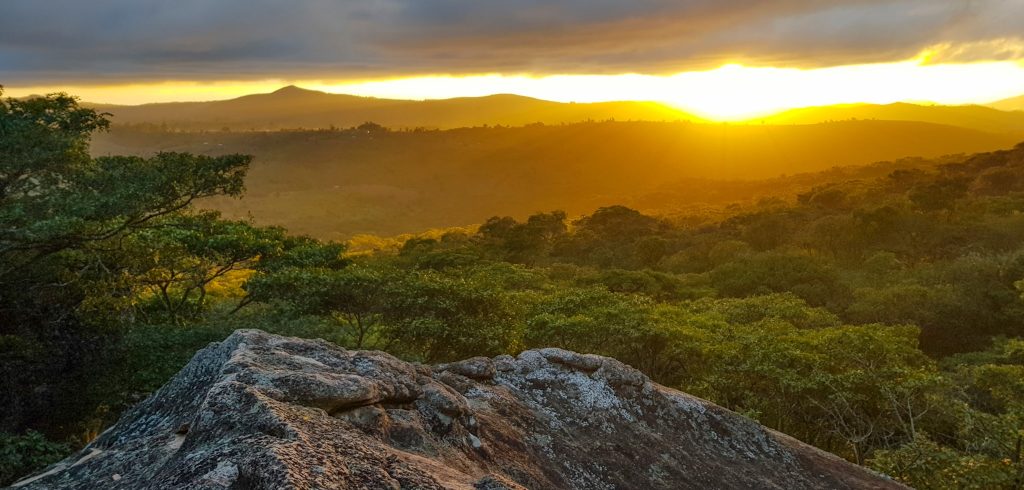Navigating the treacherous Ntchisi Forest Reserve
An elderly man identified only as Khakhakha disappeared from Chilipula Village, Traditional Authority T/A Kasakula in Ntchisi District.
Florence Mataya from the same village, told Nation on Sunday in an interview recently that Khakhakha lived alone and it was three days after his disappearance that neighbours noticed.

She said one person recalled seeing Khakhakha leave his compound with a panga knife on the day he disappeared, heading towards Ntchisi Forest situated a few metres from the village.
According to Mataya, his search party did not take long to find him.
He was spotted near Lifuliza River missing an arm, possibly from a hyena having helped itself to his decomposed carcass.
Upon inspection of the body, cause of death was attributed to a possible snake bite.

Mataya described Ntchisi Forest Reserve as a treachorus habitat for some of the deadliest snakes, but also a source of their livelihood .
“Navigating the dense forest cover is not for the faint-hearted. We know the risks and dangers that lie within, but we still brave daily visits because what lies in the thickness outweighs our benefit and need,” she says.
Mataya was bitten in 2008 while pregnant by a snake she called songo (black mamba)
‘I went to pick mushrooms and I didn’t notice it eating the mushrooms. I bit me right here (pointing to her thigh),” she says.
The mother of four survived after treatment with a combination of traditional and modern medicines.
Of course, there are other threats apart from snakes such as the hyenas and monkeys who mainly damage crops.
Mataya adds that during farming season, villagers build huts within the farms where they move into from morning till evening to scare the monkeys away.
But their biggest threat remains snakes that also include pythons, puff adder (mphiri), wolf snake (khakho) and kasanthi.
Victoria Jazele’s encounter with one of the foests’ two-fanged, slithery creatures was a week after Nation on Sunday interviewed the women.
“It was around 9 am on a Wednesday when I went to cut grass for thatching the roof of my house. I saw a black mamba basking in the sun on a rock. I retreated to avoid catching its attention and waited until it left to continue my journey as I was already at one of the forest entrances,” she says.
For these Chilipula women, fetching firewood, picking mushrooms and cutting grass is a daily challenge they unwillingly undertake, exposing their lives, but pushed from a place of love and care for their families as well as survival.
Coupled with poverty and the lack of alternatives in energy resource and sustainable income to enable them to buy than risk a journey into a death trap to pick relish (mushrooms) and firewood, each day is valuable as their future is determined by that thick forest.
According to Malawi plus com,
Ntchisi Forest Reserve is one of Malawi’s last remaining indigenous rainforests with thriving vegetation and trees that form a canopy 30 metres high while lianas and strangler figs compete for the sunlight.
The reserve covers approximately 75km2.
It is surrounded on all sides by rolling hills covered by subsistence farming and dotted with traditional villages.
According to the women, villagers are permitted into the forest every Saturdays to pick firewood and any other day is prohibited and out of bounds.
However, picking mushrooms and cutting grass is allowed any day and that is where the bone of contention lies.
T/A Kasakula, however, downplayed the extent of snake bites, saying in his 22-year tenure, only one person has died (Khakhakha).
“People talk too much, but it’s not as bad as it’s portrayed. The snakes are there, but they are not as deadly,” he said.
He said two python’s were killed in 2022 after they were spotted closer to the village traveling as a pair.
Otherwise he said the monkeys are not as a bother as in previous years and hyenas do not wreak havoc.
But for women in his village, their daily struggle for survival is real and they may be speaking from experience because it is them who are expected to navigate Ntchisi Forest Reserve by learning to co-exist with its inhabitants which they sometimes come face to face.
There are over 300 villages under Kasakula.





